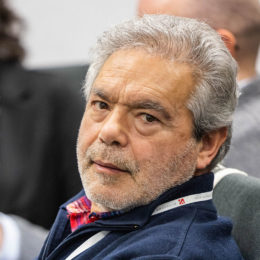The human life expectancy at birth has remarkably increased, especially since the mid-1800s, and has continued to rise steadily to date.
Jose Maria da Fonte Ferreira
However, the associated aging of the population coupled with factors such as increased physical activity, obesity and environmental stimuli, lead to serious consequences in the function of the entire human musculoskeletal system, including: the loss of bone mass or density due to decreasing contents of calcium, other minerals and bone organic matrix by osteoporosis , resulting in the increased brittleness and breakage of bone; the increased incidence of degenerative diseases such as osteo-arthrosis in which the joints become stiffer and less flexible. Bone joints breakdown may also result from inflammatory disease such as rheumatic arthritis, lupus, psoriasis arthritis. All these diseases are characterised by intense pain, stiffness, and deformity. And bone tumour resections with higher incidence nowadays. Therefore, bone is the second most transplanted tissue worldwide, right after blood transfusions, making bone regeneration is one of the most important and rapidly rising issues over the last decade, still to be satisfactorily solved.
Bioactive glasses, which are nowadays available commercially and considered for bone regeneration, suffer from poor thermal stability, improper dissolution rates, which do not suit the time needed for the regeneration of bones. Alkali-free bioactive glasses may be considered as good candidates to solve all the challenges mentioned above. They have moderate dissolution rates better adjusted to the bone regeneration process, broader thermal stability windows than 45S5 glass, they are not cytotoxic and they are characterized by fast formation of a HCA surface layer, which supports strong bonding to the bone and and soft tissues.
The main goal of the project is to verify if novel bioactive glass wool composed of microfibers can be accommodated into bone defects, easily matching their shapes and transform into hydroxyapatite, finally forming a bone tissue similar to natural one. An alkali-free bioactive glass based on Diopside (Di) – Fluorapatite (FA) – Tricalcium Phosphate (TCP) system will be used as parent glass and will be doped with suitable amounts of oxides of B, Na, K, Sr, Zn and Zr. We aim to modify a glass composition to enhanced thermal stability and avoid low liquid-liquid phase separation which is crucial to enhance the glass stability, as the low-temperature glassy phase may crystallize under the glass fibre drawing processing conditions. This strategy involves the incorporation of therapeutic ions that will be leached off and delivered after implantation to stimulate bone regeneration, therefore further enhancing the biological performance of the bioactive glass.
Next, we plan to develop bioactive glass microfibers using Saint Gobain method and form glass wool dedicated to fill bone defects and regeneration of the bone. For this purpose, we will establish a dedicated system for microfiber development in laboratory scale. We also aim at a comprehensive in-vitro assessment of the biological performance and bone regeneration ability of the bioactive glass wool constructs. They will include but not limited to: degradation (according to ISO 10993-14), ion-release, bio-mineralization (according to ISO 23317), complex cell culture tests under both static (according to ISO 10993-5) and dynamic conditions. Finally, the in-vitro bone regeneration process will be verified experimentally (having as makers both biomineralization and cell behaviour) in the perfusion bioreactor, which provides a dynamic culture system for efficient exchange of nutrients and mechanical stimulus. The process of hydroxyapatite formation and its transformation into bone-like tissues will be continuously monitored with custom made imaging system based on dedicated imaging fibres.
Project details
Project title: Novel bioactive glass microfibers and scaffolds for supervised bone regeneration
Principal Investigator: dr hab. Jose Maria da Fonte Ferreira
Host institution: The ŁUKASIEWICZ Research Network – Institute of Microelectronics and Photonics
Project duration: 01.09.2022 – 31.08.2024
Project’s website: www.imif.lukasiewicz.gov.pl/en/bagbone/

